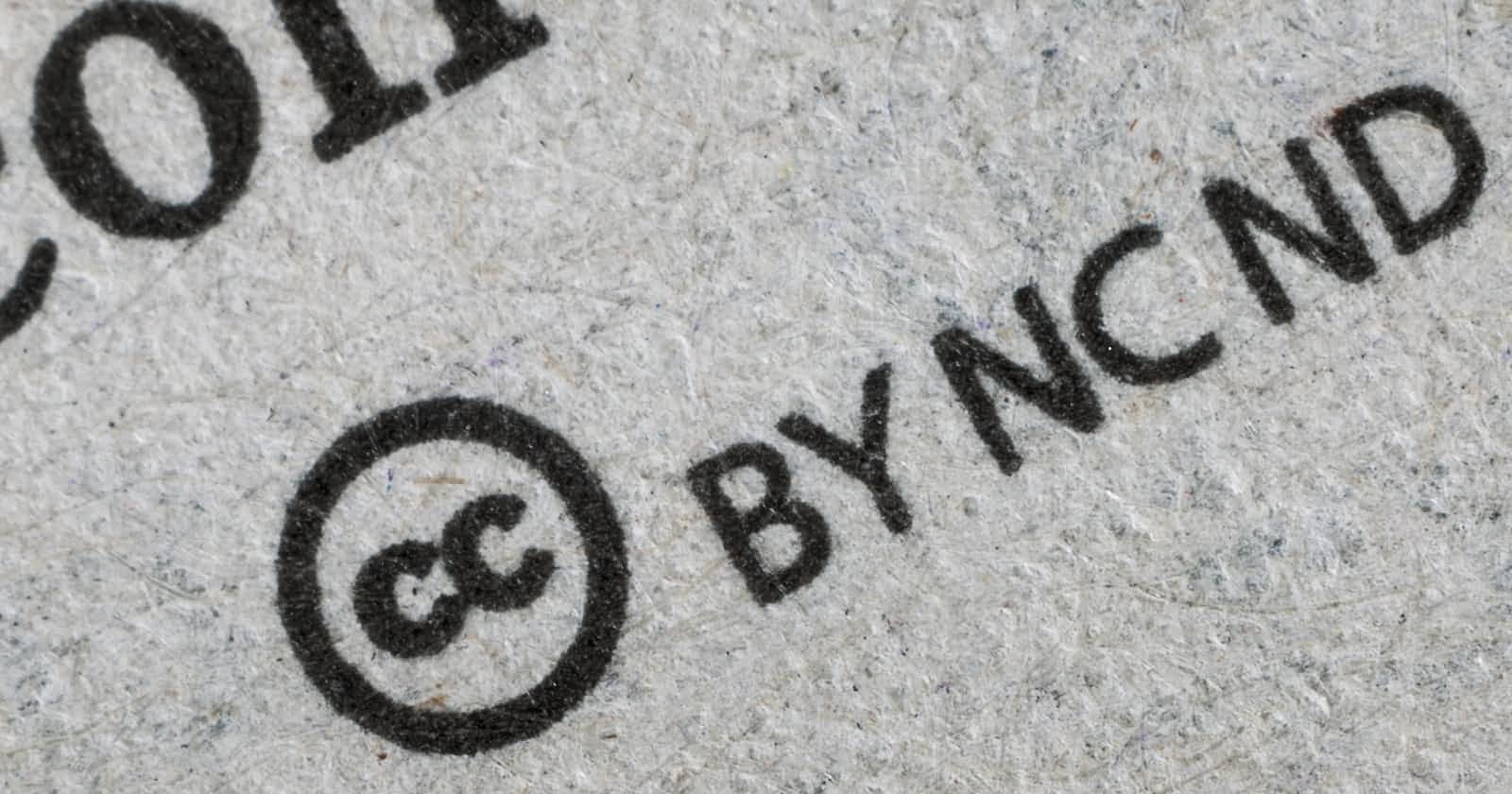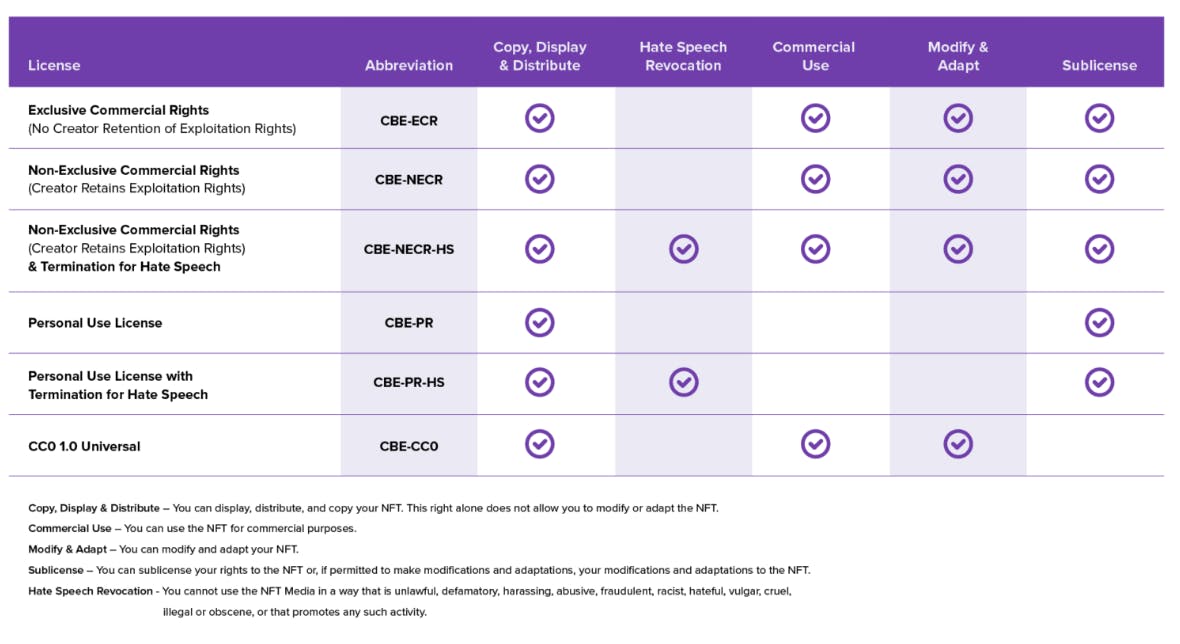Table of contents
I discussed the purpose of the NFT that drifted away from its original goal.
Luckily, a16z figured out a way to preserve the original intent of NFTs by implementing a digital license!
Let's dive in to discover how it works!
"Can't Be Evil" principle to NFT licenses
The original idea was borrowed from Creative Commons (CC). It allows creators to open up aspects of their copyrighted work to the public for sharing, remixing, and reuse beyond the default "all rights reserved" notice.
The license clearly explains what copyright can and allows sharing in the public space.
"Can't Be Evil" licenses want to achieve the same goal in NFTs.
"Can't Be Evil" licenses explicitly outline the buyer's rights regarding the artwork for their NFTs, including whether these rights are exclusive (only the buyer gets to choose how their NFT artwork is used, and the creator relinquishes all licensed rights); whether they include commercial rights (rights that allow the buyer to use their NFT for business purposes); and whether they will enable the buyer to modify, adapt, and create derivatives from their purchased artwork (like changing the appearance of artwork or using it in a different context).
But more importantly, the "Can't Be Evil" licenses provide a framework to comply with government regulations and requirements. In addition, they provide a transition into licensing and standardization without impacting the creators' additional efforts through legal processes later down the road.
How do they work?
There are six categories to apply for licenses in different situations that cover all exclusively and inclusively.
The key point is that they protect creators' works and buyers who have purchased the NFTs.
It is irrevocable by creators and respectful of modifications and adaptations. They support transparent sublicensing, respect for third-party content, and clarification of license ownership in the event of a loss.
Before use
Even though they are free to use, you still want to hire legal consultants to review the language to ensure the intent.
Further readings:
a16zcrypto.com/introducing-nft-licenses
github.com/a16z/a16z-contracts

If you want to support my writing, buy me a coffee here.
Photo by Umberto

Note: Cross-references of this article have been created by the author and have been cross-referenced on multiple platforms here. Please reference the resources and credits here. Reach out to the authors if you have any questions.



